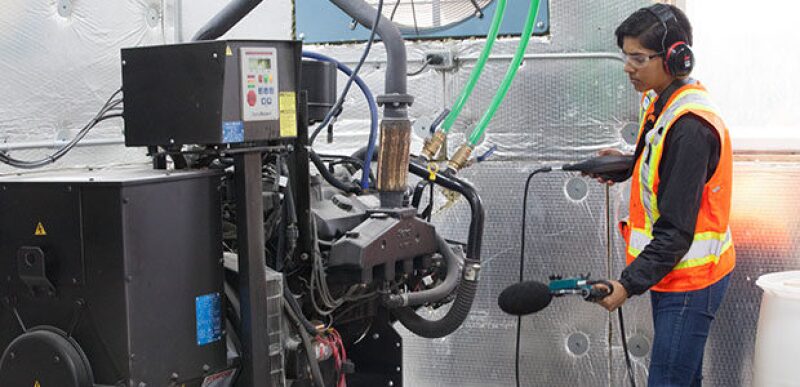Noise-induced hearing loss is a prevalent workplace injury in the modern industrial plant. Employers must manage workplace noise exposure. Doing so is complex in terms of accurately assessing sound levels and noise exposure in the workplace, identifying and ranking the dominant noise sources to be targeted for mitigation, and finding practicable, effective, and affordable noise control solutions.
Many aspects of acoustics and noise control are counterintuitive, and there is a great deal of myth and misinformation cluttering the common knowledge about noise. But there is a “convenient truth” we can use to cut through the confusion. Quite simply, there are really only a few ways to reduce noise indoors. All workplace noise control measures are really just variations of the three basic methods, which are
- Reduce the amount of sound that is produced by a given process, operation, or activity
- Block or contain and dissipate the sound
- Reduce excessive room reverberation
That’s it. Three options. A bit of explanation will make this clear.
Some Important Basics of Acoustics
The reason that all indoor noise-control measures fall into just three broad categories arises from the core fact of acoustics that there are fundamentally just four factors that determine the sound level at a given location indoors: the sound emission levels of the sound sources in the room; any physical measures that may impede or dissipate the sound as it propagates from the sources to the locations of interest; the distances from the sources to the locations of interest; and the amount of reverberation. (Reverberation is the tendency of sound to linger, and it occurs as a result of the sound bouncing around inside an enclosed space, reflecting and re-reflecting off of the many room surfaces. Excessive reverberation in a room increases the amount of noise by allowing the sound to build up in a cumulative fashion.)
Assuming that the distances generally cannot be changed between the sound sources and worker locations, the other three factors correspond to the three categories of noise control measures.
Reducing the amount of sound that is produced by a given process or operation is the most effective noise-control method but is often also the most difficult to implement. Blocking or containing and dissipating the sound is the next most effective noise-control method and covers all of the most commonly used methods. Reducing room reverberation is only effective in a very limited number of cases.

